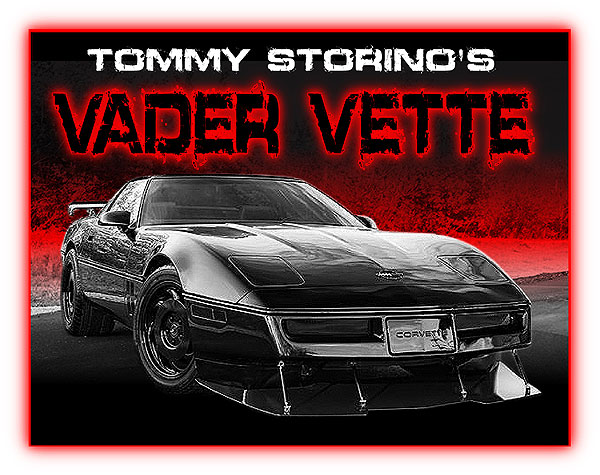Tommy Storino Builds a Bas-Ass Street Machine 1986 C4 Corvette on a Budget
Dateline: 8.5.19 – Photos by Tommy Storino and Jim Broschinsky – When the C4 Corvette made its debut in the middle of 1983, the press was agog. Even though the new C4 only had 205-horsepower (five more than in 1982) and 290-lb/ft of torque (five more than in 1982), the all-new structure of the C4 used all the power the 5.7-liter Cross-Fire Injection Corvette engine so much better than the previous platform. The difference between the C3 and the C4 was as stark as that of the C1 to the C2.
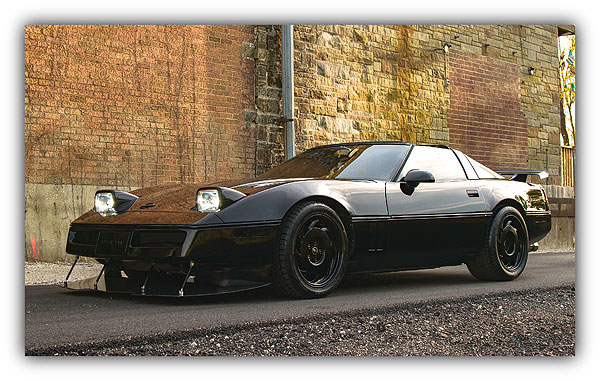
Several of the 1984 Corvettes the press got to play with were equipped with the optional Z51 Performance Handling Package for an extra $600. The Z51 package included; heavy-duty front and rear springs, sway bars, shocks, bushings, quicker steering, an engine oil cooler, and an extra radiator (pusher) fan. Chevrolet offered the Z51 package on Corvettes up to 2001, except for the years 1991 to 1995. That’s an impressive shopping list of suspension parts and it all worked great on the smooth test track the press was allowed to drive on.
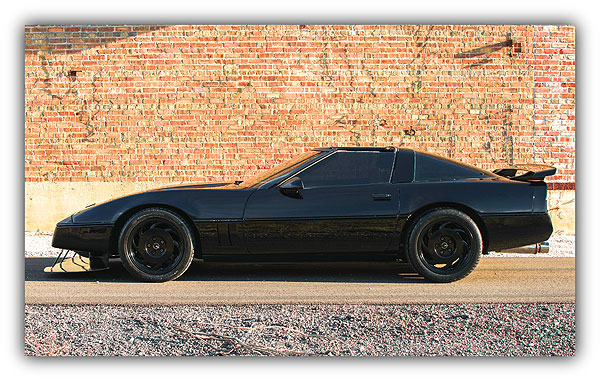
But when Z51-equipped 1984 Corvettes hit the roads, customers were in store for a harsh surprise. On anything less than a smooth road, the car’s ride was extremely harsh; so much so that in 1985 both the stock and Z51 suspensions were softened up considerable. So, Corvette engineers over-did-it a little and had to dial it back.
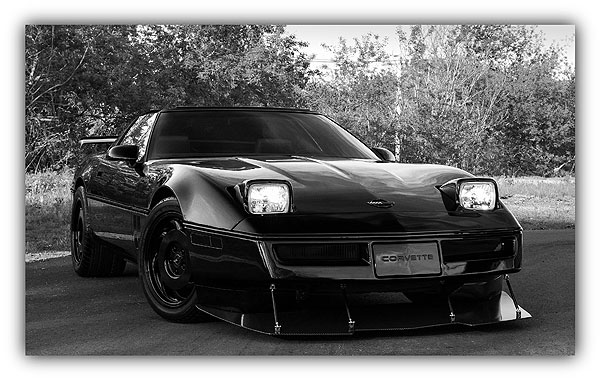
The thirteen-year C4 story was one of continuous refinement. In 1985 and 1986 the Corvette was “The Fastest Car In America” topping 150-mph. In 1985 the two-injector Crossfire Injection setup was replaced with L98 Bosch Tuned Port Injection electronic fuel-injection system that bumped power to 230-horsepower. In 1986 the L98 engine got aluminum heads half way through the production year and power was up slightly to 235-horsepower. Power kept increasing steadily until the arrival of the 300-horsepower LT1 in 1992 and finally the LT4 engine in 1996 with 330-horsepower. The LT4 was rumored to be under-rated, with a more accurate rating of around 360-horsepower.
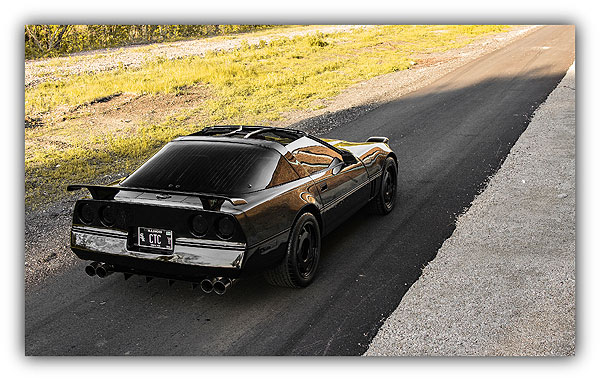
This non-stop improvement created an unusual situation. As the new Corvettes kept getting better and better, the earlier C4 Corvettes became less and less desirable. The “to-die-for” Corvette from just a few years before was becoming two-day-old bread, or like out of favor 45-records being placed in the back of the rack. Adding insult to injury, it seems that because early C4 Corvettes are at the bottom of the pecking order, many get abused and or ignored, and become basket cases.
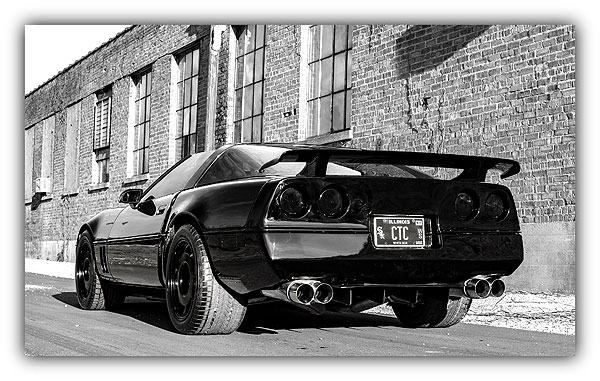
However, this situation does create an interesting condition for Corvette enthusiasts looking for a donor car. Early C4 Corvettes can be had for as little as little as $4,000. But for Tommy Storino of Chicago, Illinois, his 1986 Corvette deal was bitter sweet.
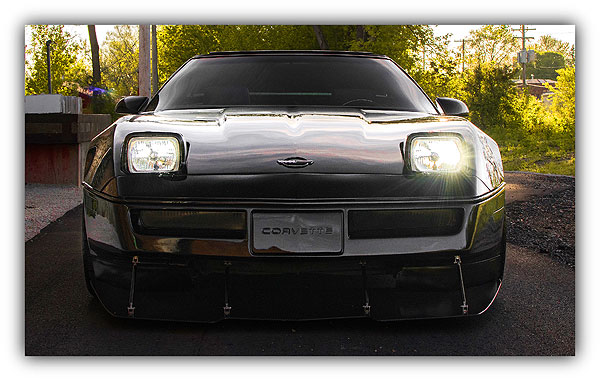
Tommy’s Uncle Pete was a Lincoln Towncar man because he was a very big man; 6’-4” and 350-pounds. So the family was surprised when he bought a 1986 Corvette, and wondered if he was playing a joke on them. No one knew why he would ever buy a Corvette. Two months later, he died suddenly.
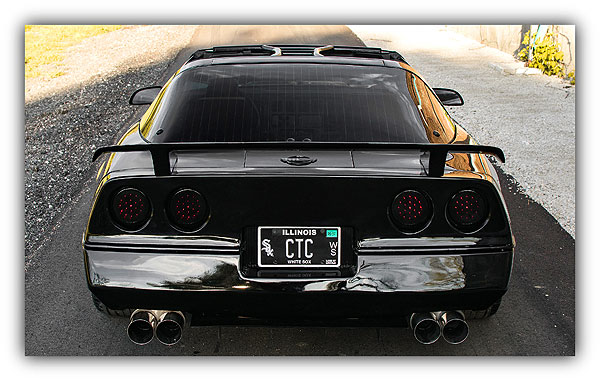
After the funeral proceedings were completed, Tommy’s cousin invited him to stop by the house to look at the mystery Corvette. Tommy’s cousin is a Jeep guy and wanted to restore the Corvette, but he just didn’t have the time. The car pretty much needed everything, except for the interior, which was in very good condition. But everything else; paint, tires, engine, transmission, you name it, was shot. And the car was leaking fluids.
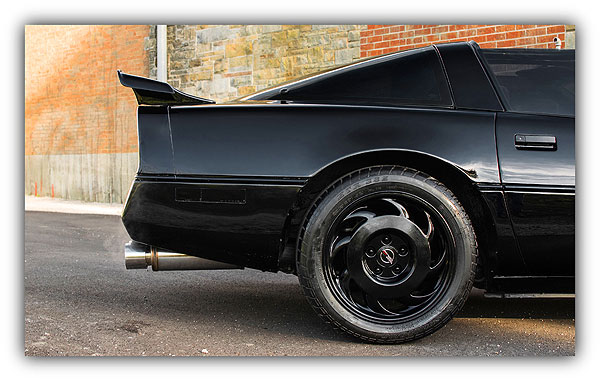
When Tommy’s cousin handed him the keys, he thought his cousin wanted help getting the car out of the garage. Actually he did. Then his cousin said, “Take it, it’s all yours!” The car was drivable, but obviously needed a lot. Now Tommy had the beginnings of a project car, and he didn’t have to spend $4,000 for a donor car.
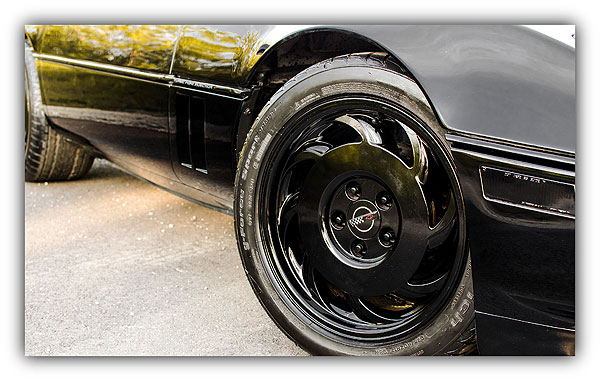
Storino’s project started in June 2015. Tommy explained, “I always liked the early C4 Corvette before they went with the round taillights and the LT1 engine. I liked the clean look of the early C4s and the digital dash. When I got the car it had a set of mint condition 1987 wheels and the paint was in terrible condition. I wanted something sinister-looking with racecar looks.” Black-on-Black-on Black was to be the overall theme.
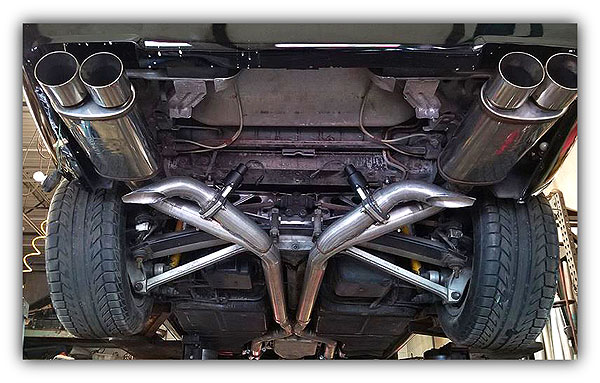
The L98 Tuned Port Injection engine was pulled and completely rebuilt; nothing radical, but reliable. The all-black theme was carried over into the engine compartment with the only splash of color being the intake runners and valve covers hydro-dipped carbon fiber, Corvette badges on the valve covers, red ignition wires, and polished Exotic Muscle Longtube Headers. All of the car’s basic systems were refreshed; cooling system, brakes, power steering, shocks, and the automatic transmission was rebuilt.The rear suspension received new universal joints, the differential was refreshed, and a new 3.75:1 gear set was installed.
To achieve the racer-look Tommy was going for, the suspension was lowered one-inch. The ’87 wheels were swapped out for a full set of 1990 ZR-1 saw-blade wheels that Tommy had power-coated black and shod with ZR-1-size tires; P275/40ZR-17 on the front and P315/35ZR-17 on the rear.
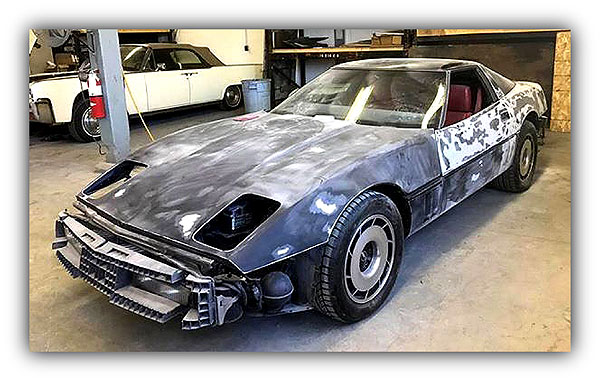
Corvette racecars have ground effects, right? Tommy’s Corvette has a rear wing that he’s not sure of who the manufacturer is, but he’s been told that they are no longer being made and are quite valuable. The adjustable front splitter and rear defuser are both hand-fabricated.
Storino lucked out on the car’s black paint. The original paint was stripped and the body was in surprisingly good condition, with no major problems and no Bondo. Tommy requested GM Black paint, but his painter always wanted to paint a car with very expensive House of Colors paint, so that’s what he used and didn’t charge Tommy any extra for the paint. The GM Black has a small amount of brown in to warm up the black a little. The House of Color black has blue in it, giving it a cold-black look.
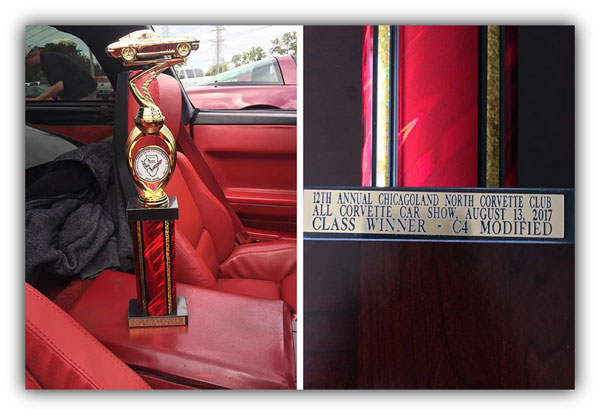
The taillights are custom-made LED units with black-tinted clear lens and the side markers are also tinted black. And the glass is tinted black. Tommy also installed HID headlights and HID fog lights. The only color on the car’s exterior is black. It all makes for a stark contrast when the windows are down with the factory Bright Red interior.
Appearance aside, one of the most interesting mechanical details on Storino’s Corvette is its exhaust. The Exotic Muscle Longtube Headers connect to stainless steel 3-inch pipes with an x-pipes and MagnaFlow mufflers. Where the exhaust pips bend at the back to connect with the mufflers, Tommy had a solenoid-controlled cutout setup installed. “Cutouts” have been around for a very long time, but we typically see various kinds of Cat-Backs on Corvettes and not cutouts such as these. Tommy says, “Sometimes I just like to drive with open headers, just for fun!”
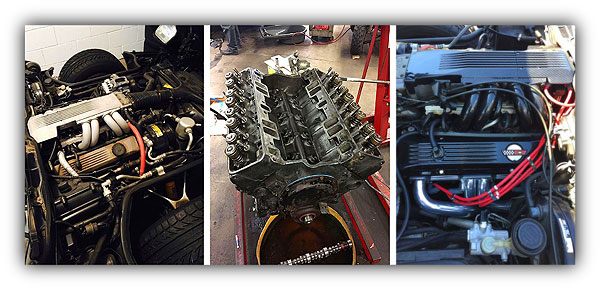
Between the Black-on-Black-on-Black with the Bright Red interior, the bodacious ground effects, bright LED lighting, and booming exhaust note, Tommy Storino’s 1986 former “basket case” Corvette is anything but subtle. After Tommy posted photos of his Corvette on social media, the car picked up the nickname, “Vader Vette”. We concur that the name totally fits. With the open headers you can almost hear Darth Vader saying, “Tommy… I’m… your Corvette!” – Scott

PS – You can keep up with Tommy Storino here… https://www.facebook.com/tommystorino

